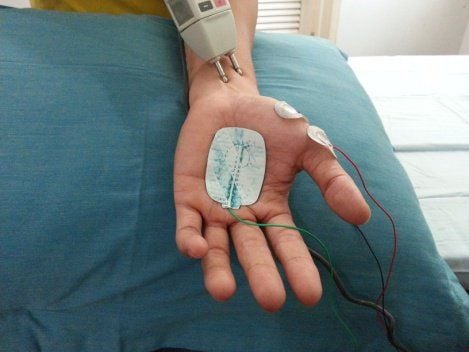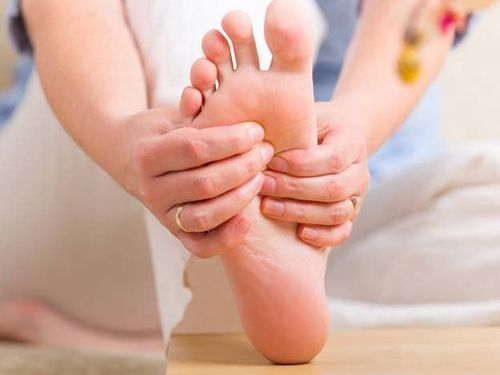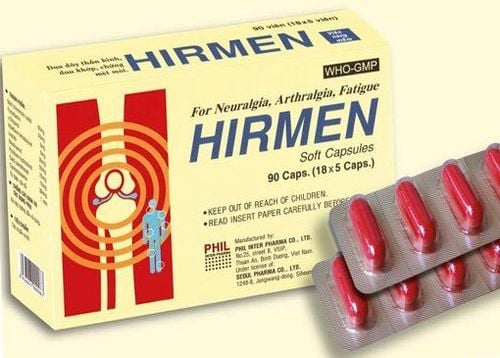This is an automatically translated article.
Polyneuritis can be caused by many different causes. The goal of treatment for polyneuritis is to control the cause and relieve symptoms.
1. Polyneuropathy
Polyneuropathy is a condition in which the peripheral nerves running throughout the body are damaged. The disease affects nerves in the skin, muscles, and organs, leaving them damaged and unable to send signals back to the brain on a regular basis. However, the condition does not affect the nerves in your brain or spine. Polyneuritis is divided into two main types, acute and chronic.
A person's overall health is related to the risk of polyneuropathy. Common risk factors include:
Diabetes mellitus; Kidney or liver disease; Autoimmune disease ; Alcoholism; Infections, such as HIV, shingles and Lyme disease; Frequent use of certain parts of the body to do repetitive movements (such as factory workers, factories), also known as Repetitive Strain Injury Syndrome (RSI).

Người bệnh đái tháo đường có nguy cơ mắc bệnh đa dây thần kinh
2. Diagnosis of polyneuropathy
The doctor will perform some tests to diagnose polyneuropathy , as well as find out the cause of the disease. Namely
Complete physical examination to discover the affected body parts and find weak or atrophied muscles (if any); Electromyography (EMG) nerve function test to see the extent of damage; Blood tests, urine samples, and biopsies of the affected area to find out the cause and severity of the disease; Other tests may be needed if an underlying condition is suspected. For example, lumbar puncture can help find abnormalities of protein and white blood cell levels in people with Guillain-Barré syndrome.
3. Treatment of polyneuritis
Treatment options for polyneuritis will depend on the cause and the location of the symptoms. In some cases, doctors may give patients pain relievers to help control pain and discomfort caused by nerve damage. Among them, non-steroidal anti-inflammatory drugs (NSAIDs) are often prescribed.
Measures to treat polyneuritis are given according to specific groups of causes as follows:
3.1. Due to Lifestyle Making healthier lifestyle changes can help treat polyneuritis. Patients should drink less alcohol, and at the same time avoid doing repetitive tasks to reduce symptoms.

Người bệnh cần hạn chế tối đa việc sử dụng rượu bia
3.2. Due to trauma If polyneuritis develops after an injury, doctors often recommend physical therapy to restore total body control. The patient also learns to master the nerve pain and sensation caused by the injury.
3.3. Autoimmune disease When an autoimmune disease leads to polyneuritis, your doctor may recommend different treatments, including:
Corticosteroids; Direct injection of immunoglobulins into the patient's vein; Replace plasma to remove toxins from the blood. 3.4. Due to diabetes In cases where diabetes is the cause of polyneuritis, your doctor will recommend a treatment plan to control blood sugar. Patients usually take oral medications or self-inject insulin. Rarely, people with type 1 diabetes may need surgery to transplant insulin-producing cells (islet cells) from a donor pancreas. This helps the body produce and release more insulin. This is an important surgery, usually only recommended if all other treatments for polyneuritis have failed.
3.4. Due to cancer If cancer cells or tumors are the cause of polyneuropathy, your doctor may recommend surgery to remove them. In addition, chemotherapy can also help remove tumors or cancer cells that are pressing on the patient's nerves.

Các tế bào ung thư có thể là nguyên nhân gây bệnh đa dây thần kinh
4. Alternative therapy
After consulting a doctor, people with peripheral neuropathy can try the following alternative treatments for pain relief:
Acupuncture: The insertion of thin needles into different points on the muscle may reduce symptoms, improve gradually after many courses of treatment. Acupuncture is safe when performed by a qualified physician and is sterile; Alpha-lipoic acid: This was once a popular European polyneuritis treatment. However, consult your doctor because using alpha-lipoic acid can affect blood sugar, or cause stomach upset and rash; Herbs: Certain herbs, such as evening primrose oil, may help relieve nerve pain in people with diabetes. Some herbs will interact with drugs, so patients also need to talk to their doctor before using; Amino acids: Amino acids, such as acetyl-L-carnitine, may be good for someone who has just had chemotherapy or has diabetes. Possible side effects are nausea and vomiting.
5. Lifestyle and home remedies
For good control of peripheral neuropathy in general, or specifically polyneuritis, patients should:
Take good care of your feet, especially for people with diabetes: Daily monitoring is recommended if blisters, cracks or calluses appear on the feet. Wear soft cotton socks and loose, comfortable shoes; Exercise: Regular exercise, like walking three times a week, can reduce nerve pain, improve muscle strength, and control blood sugar. Gentle exercise routines such as yoga and tai chi can also help; Quit smoking: Smoking can affect blood circulation, increasing the risk of foot problems, as well as other neurological complications; A healthy diet: Good nutrition is especially important to ensure the body gets enough essential vitamins and minerals. Patients should add fruits, vegetables, grains and lean protein to the daily menu;

Người bệnh cần có chế độ ăn hợp lý tăng bổ sung trái cây và rau quả
Avoid drinking too much alcohol: Alcohol can aggravate peripheral neuropathy; Monitor blood sugar: People with diabetes need to have good control of their blood sugar so that neurological disease can be improved. In general, patients can limit the risk of nerve damage by early diagnosis and treatment of existing diseases. If you have any symptoms of polyneuropathy, especially after a major injury, see your doctor as soon as possible. Treating polyneuritis early is the best way to keep symptoms from disrupting a patient's life.
To register for examination and treatment at Vinmec International General Hospital, you can contact the nationwide Vinmec Health System Hotline, or register online HERE.
Reference source: healthline.com; mayoclinic.org













